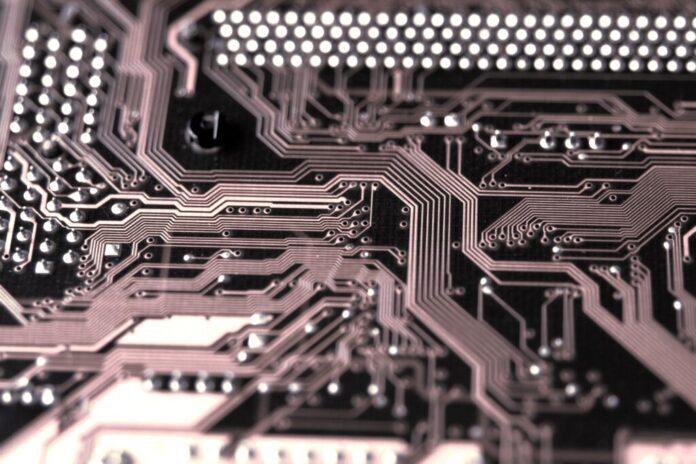In the realm of circuit board design, achieving precise impedance control is crucial for ensuring signal integrity, minimizing electromagnetic interference (EMI), and maintaining the reliability of electronic devices. This comprehensive guide explores the fundamentals of impedance control, its importance in PCB (Printed Circuit Board) design, practical techniques, and key considerations for engineers and designers.
Introduction to Impedance Control
Impedance in PCBs refers to the opposition offered by a circuit to the flow of alternating current (AC). It includes resistance, inductance, and capacitance, affecting the performance of signals traveling through traces. Impedance control involves maintaining consistent impedance values across PCB traces to prevent signal distortion and loss.
Importance of Impedance Control
Impedance mismatches can lead to signal reflections, noise, and ultimately, unreliable circuit performance. Key reasons for impedance control include:
Signal Integrity
Ensuring signals arrive at their destination without distortion.
EMI Reduction
Minimizing electromagnetic interference between traces.
Manufacturability
Facilitating PCB fabrication and assembly processes.
High-Frequency Applications
Crucial for circuits operating at high frequencies.
Fundamentals of Impedance
Understanding the basics of impedance is essential:
Resistance (R)
Opposition to current flow.
Inductance (L)
Reactance to changes in current.
Capacitance (C)
Reactance to changes in voltage.
Therefore a line which has a little of each components in series can be modeled as below:
Types of Impedance in PCBs
Different types of impedance include:
Characteristic Impedance
Impedance seen by an AC signal in a transmission line.
Differential Impedance
Impedance between two conductors in a differential pair.
Single-Ended Impedance
Impedance relative to ground for single signal paths.
Factors Affecting Impedance
Key factors influencing impedance include:
Trace Width and Thickness
Directly affects impedance values.
Dielectric Constant
Material between signal layers impacts impedance.
Trace-to-Plane Spacing
Distance between trace and reference plane affects impedance.
Design Considerations for Impedance Control
Critical aspects to consider during PCB design:
Layer Stack-up Design
Determines trace geometry and impedance values.
Trace Routing
Ensures consistent impedance across signal paths.
Component Placement
Affects signal integrity and interference.
Techniques for Achieving Impedance Control
Methods to achieve precise impedance:
Controlled Trace Width
Calculated based on desired impedance.
Dielectric Thickness
Determines capacitance and impedance.
Impedance Calculators
Tools for accurate impedance prediction.
High-Frequency PCB Impedance Design
Challenges and solutions for high-frequency applications:
Skin Effect
Higher frequencies concentrate current near trace surfaces.
Loss Tangent
Determines dielectric losses at high frequencies.
Material Selection
Critical for minimizing signal loss and maintaining impedance.
Differential Impedance Matching
Ensuring balanced impedance for differential signals:
Even and Odd Modes
Impact on differential impedance values.
Pair Skew
Ensures signals arrive simultaneously at the receiver.
Signal Integrity and Impedance
Maintaining signal integrity through impedance control:
Reflections
Minimizing signal reflections with proper impedance matching.
Eye Diagram Analysis
Evaluates signal quality and integrity.
Impedance Testing and Validation
Methods for verifying impedance values:
TDR(Time Domain Reflectometry)
Measures impedance along traces.
VNA (Vector Network Analyzer)
Characterizes impedance across frequencies.
PCB Manufacturing and Impedance Control
Challenges and considerations during PCB fabrication:
Fabrication Tolerances
Impact on trace dimensions and impedance values.
Copper Plating Thickness
Affects trace conductivity and impedance.
Practical Examples and Case Studies
Real-world applications of impedance control:
Telecommunications
Ensuring reliable data transmission.
Consumer Electronics
High-speed interfaces and memory modules.
Medical Devices
Signal integrity critical for patient monitoring.
Impedance Control in Multilayer PCBs
Managing impedance across multiple layers:
Via Design
Impacts impedance continuity between layers.
Layer-to-Layer Coupling
Ensures consistent impedance paths.
Future Trends in Impedance Control
Emerging technologies and advancements:
Advanced Materials
New dielectric materials for improved performance.
Automation
AI and machine learning for optimizing impedance designs.
Conclusion
Impedance control is a cornerstone of modern PCB design, essential for achieving high-performance, reliable electronic systems. By understanding the fundamentals, applying best practices, and leveraging advanced tools, engineers can ensure robust signal integrity and minimize potential issues in electronic devices.
